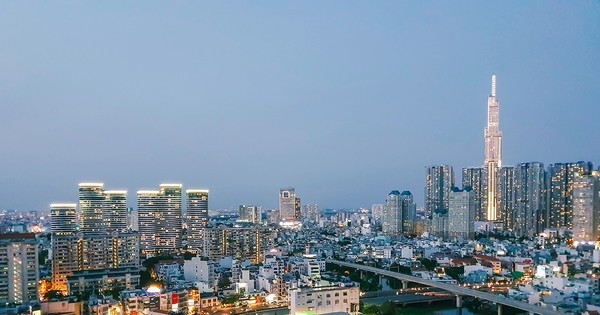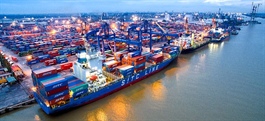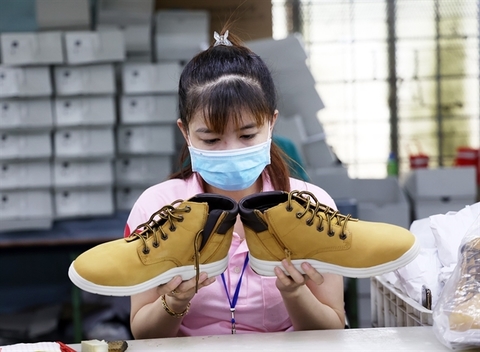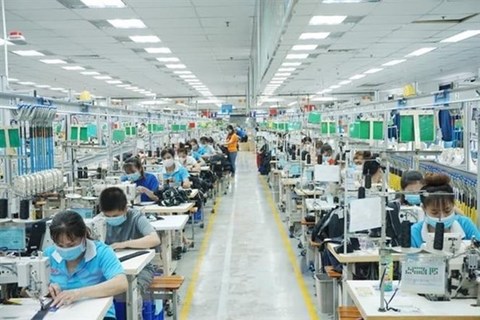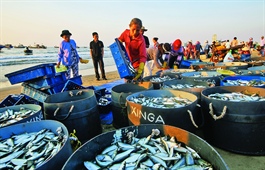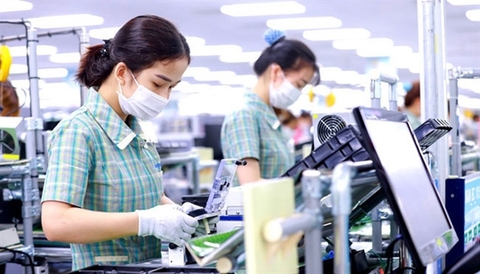Innovative ideas can improve traffic congestion
Innovative ideas can improve traffic congestion
Since Vietnam initiated economic reforms through the policy of Doi Moi in 1986, the transport network in Ho Chi Minh City has not seen much development, despite huge investments.
A coner of HCMC. Photo: ĐỨC HUY |
Recently, Mr. Phan Văn Mãi, Chairman of the People's Committee of Ho Chi Minh City, emphasized the need to do a deeper study into the management of the traffic system, its economy, and various projects related to it. Only when innovative ideas and new decisions are put into practice will the traffic congestion in Ho Chi Minh City improve.
Consequences of congestion
The main traffic problem in Ho Chi Minh City is the daily congestion caused during peak hours on almost all roads in the city. Most of the residents living and working in Ho Chi Minh City lose many hours trying to get past traffic jams on a daily basis. Traffic jams hinder mobility, and the consequences lead to more pollution, more fuel consumption, and also more economic loss. Currently, the ratio of land under traffic as opposed to construction land in Ho Chi Minh City is only 13%, while the standard ratio must reach at least 23%. The total length of roads is around 4,700 kms and the density is 2.26 kms of road per one square km, which is lower than in similar developing cities such as Bangkok, Taipei, and Singapore.
A review was also done on socio-economic development to ensure national defense and security in the Southeast and the Southern Economic Region at a conference in July under the implementation of Resolution 53/2005 and Conclusion of 27/2012 of the Politburo. According to Mr. Phan Công Bằng, deputy director of the Ho Chi Minh City Department of Transport, the city recently studied the impact of traffic on the development of the city. This called for the implementation of projects to control and limit private vehicles, increase public transport vehicles by 2025, and side by side develop ring roads to reduce the number of vehicles entering the city center. Research results show that traffic congestion costs Ho Chi Minh City about USD 6 bln each year.
According to Mr. Phan Công Bằng, the traffic index of Ho Chi Minh City accounts for about a quarter of the whole country, showing that there is great pressure on the traffic system. Therefore, traffic congestion in Ho Chi Minh City should be considered seriously, although since 2015 the city has controlled the traffic situation, especially in the airport and seaport areas. However, according to Ms. Phan Thị Thắng, Vice Chairman of the People’s Committee of Ho Chi Minh City, when the traffic system improves the economy also develops. Therefore, although there are many decisions to resolve concerning traffic needs, the congestion at the city gateways makes traffic flow between provinces and cities difficult to navigate, hindering economic development to a great extent.
New decisions needed
According to Mr. Phan Văn Mãi, Chairman of the People's Committee of Ho Chi Minh City, currently, the traffic system in Ho Chi Minh City has five types covering road, railway, waterway, maritime, and aviation. Decision 568 to adjust the city's transport planning was approved by the Prime Minister nearly ten years ago, but the implementation of projects is too slow, and only about 35% have been completed due to lack of capital. According to Mr. Mãi, if the appropriate mechanisms and models are not studied, the city's transport system will face many obstacles in the future.
According to the Government plan, by 2020, Ho Chi Minh City will build one or two elevated roads, and also implement two or three urban railway lines. Metro line 1 from Ben Thanh to Suoi Tien has been delayed many times and not been completed, while metro line 2 from Ben Thanh to Tham Luong has not yet started. As for the road planning, Decision 568 clearly states that there will be six highways connecting Ho Chi Minh City to the provinces with a total length of more than 350 kilometers, but so far there are only two expressways between Ho Chi Minh City-Long Thanh-Dau Giay and Ho Chi Minh City-Trung Luong-My Thuan with a total length of about 146 kilometers. The Ben Luc-Long Thanh route of nearly 58 kilometers is still unfinished.
Mr. Phan Văn Mãi, Chairman of the People's Committee of Ho Chi Minh City, said that lack of capital is the main reason why the traffic system cannot meet the target plan, along with the lack of mechanisms and breakthrough models that also greatly affect progress. The legal corridor too has many shortcomings and is not consistent with reality and international practices. In addition, many mechanisms are unstable and do not have appropriate policies to attract more investment resources.
Mr. Mãi said that the capital needs for projects is very large, and it is very difficult to rely solely on the state capital. The traffic system of Ho Chi Minh City is being planned since 2013, so it is no longer suitable. There are some bottlenecks that need to be reviewed to introduce a new strategy, promote regional linkages, and bring in the latest socio-economic development plans. He also said that in addition to the ongoing projects, the city will focus on research and investment to connect traffic from the city center to the surrounding districts, such as the Saigon riverside road connecting with the Northwest to reduce pressure on Highway 22.
According to many experts, the traffic system is weak not only in Ho Chi Minh City but also in the whole country. When goods are slow to circulate then businesses are affected, business opportunities are lost, logistics costs become more expensive, and people travel under hard and difficult conditions.
Investment in the traffic system is vital for reviving the economy, which will subsequently improve the lives of the people. Closed ring road projects can create effective inter-regional connections to help smooth and reduce the high costs for logistics. Large projects need to be accompanied by development in public transport which also calls for a reduction in personal car ownership.
Along with this, there is need to support daily management with features such as an increase of parking fees, a limit to parking space for motorbikes in the center of the city, more walking space for pedestrians, promoting use of bus travel and collecting fees for motor vehicles entering the inner-city areas. While the budget is limited for investment in traffic system development, it will be necessary to exploit potential land funds, increase public investment, and create breakthrough policies to gather enough resources.


